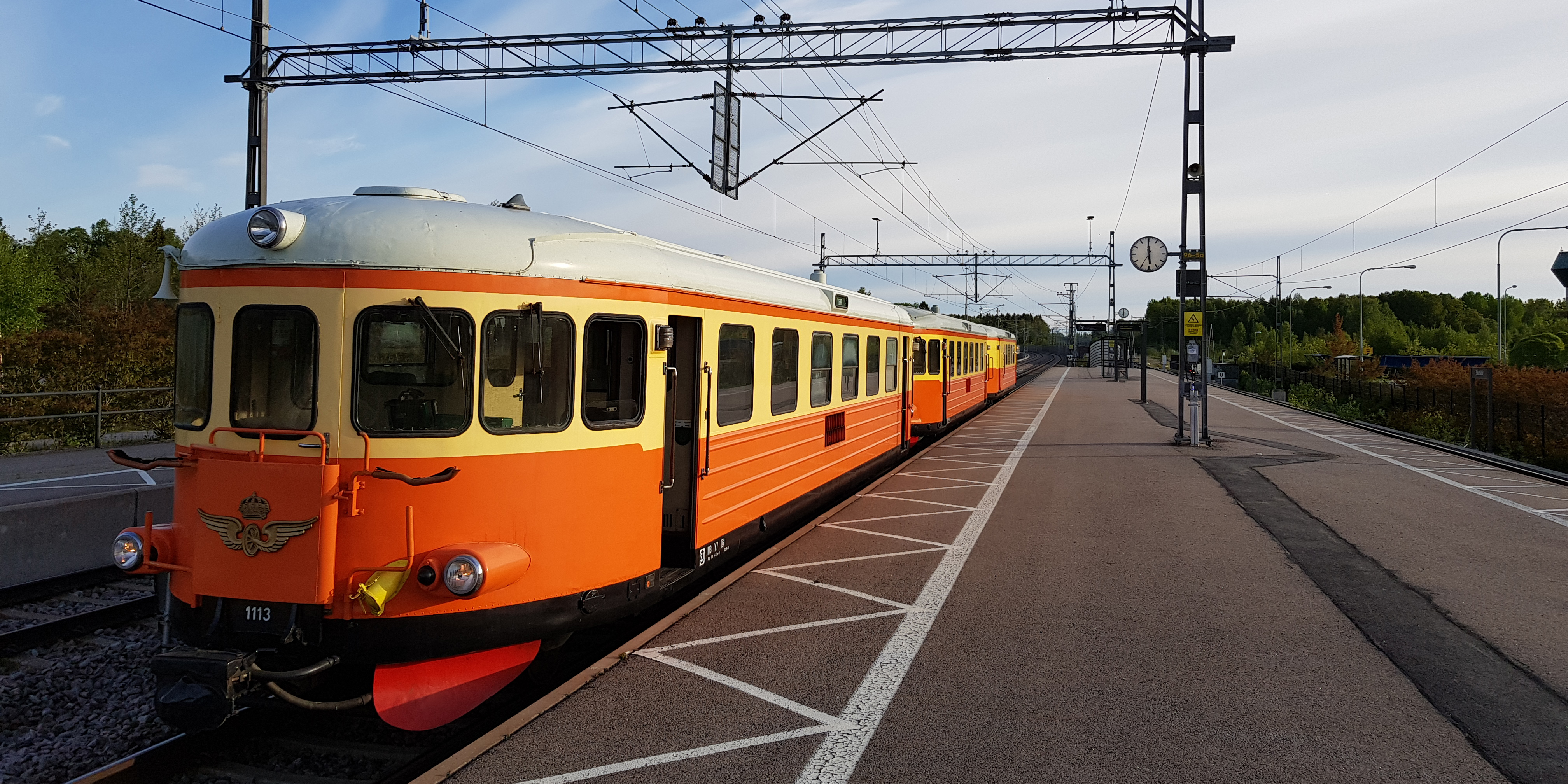
Railbus Y7 1113
Y7 1113 is a railbus built by AB Svenska Järnvägsverkstäderna (ASJ) in Linköping in 1957.
In the 1950s, SJ ordered more than 300 railbuses and trailers of the same type from different manufacturers. Railbus traffic ultimately saved traffic on many lines, as it was much cheaper and faster than running steam locomotives. This also meant that it was able to wipe out use of steam locomotives for passenger traffic in earnest. These railbuses were equipped with a Scania diesel engine, referred to as a “straight 8” with turbocharger, and are known for their classic appearance and engine sound.
As its time with SJ came to an end, Y7 1113 was used on the Västra Centralbanan railway, between Falköping and Landeryd. It spent many years at Banskolan in Ängelholm, where it was used to train drivers for Banverket, the national rail administration.
Y7 1113 came to the Swedish Railway Museum in 2010 and underwent renovation in 2011. It is often used in in trips between Gävle Central Station and the museum or the Train Hall.
Explanation
Y7 is a designation (class) of the railbus type and means:
- Y = Diesel-powered railbus
- 7 = Type 7 within the Y family, which in this case means interior with high backrests and 47 seats
- 1113 is the individual number of the railbus
Manufactured
ASJL, 1957
Length
17.6 metres
20 tonnes
Seats
47
Engine power
200 hp